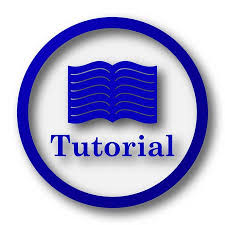DESAIN SISTEM INFORMASI MENGGUNAKAN METODE THE OPEN GROUP ARCHITECTURE (STUDI KASUS: PERUSAHAAN JASA PENGIRIMAN BARANG)
-
DOI:
https://doi.org/10.31961/positif.v6i2.906Kata Kunci:
Freight Forwarding Service, Information System, Enterprise Architecture, TOGAFAbstrak
In the current era the need for information technology or information systems becomes an important thing in all aspects of life. The need for fast, relevant and reliable information is first and foremost for users of information technology, including for companies. Therefore, supporting information technology or information systems that are needed in the era of automation is now needed in developing information systems and the development of world technology that requires everything fast and precise. Information system support to the company's needs can only be answered by taking into account supporting factors in its development. Freight Forwarding Service Company is a business enterprise engaged in land transportation services. To improve the quality and service, therefore we need an information system that can help in the business process of the JPB. One of the factors driving the need for information systems is because of the increasingly needed needs and business activities carried out. Enterprise Architecture is used to determine the architecture in support of business processes and plans in a company to achieve business goals. This study uses the TOGAF method that starts from the Preliminary, Requirement Management, Architecture Vision, Business Architecture, Information Systems Architecture, Technology Architecture, Opportunities and Solutions and Migration Planning. The expectation of this research is about a discussion of the TOGAF model that is saved by the business processes and needs of the JPB in meeting the Enterprise Architecture.
Unduhan
Referensi
Cabrera, A., Abad, M., Jaramillo, D., Gómez, J., & Verdum, J. C. (2016). Definition And Implementation Of The Enterprise Business Layer Through A Business Reference Model, Using The Architecture Development Method Adm-Togaf. Advances In Intelligent Systems And Computing, 405 (September), 111–121. Https://Doi.Org/10.1007/978-3-319-26285-7_10
Ekawati, R. (2016). Meningkatkan Loyalitas Konsumen Melalui Pelayanan , Trust , Dan Harga. Xiii(3), 37–42.
Entas, S. (2016). Perancangan Arsitektur Enterprise Untuk Perguruan Tinggi Swasta Menggunakan Togaf Adm (Studi Kasus Stp Sahid Jakarta). Paradigma, Xviii(1), 67–78.
Fahdiansyah, R., & Anas, A. S. (2017). Teknologi Informasi Sebagai Penunjang Perkembangan Sistem. Simposium Nasional Teknologi Terapan (Sntt), 5(November), 246–253.
Fahrianto, F., Amrizal, V., & Aenun, A. (2015). Perencanaan Infrastruktur Teknologi Informasi Di Lembaga Penelitian (Lemlit) Uin Syarif Hidayatullah Jakarta Menggunakan Togaf Architechture Development Method (Adm). Jurnal Teknik Informatika, 8(2), 1–13. Https://Doi.Org/10.15408/Jti.V8i2.2444
Hudha, Safarid, Y., Utami, E., & Luthfi, Taufiq, E. (2018). Perancangan Enterprise Architecture Sistem Informasi. Citec, 5(1), 40–48.
Kurniawan, D. P., Prasetyo, Y. A., & Mulyana, R. (2018). Perancangan It Master Plan Pada Fungsi Teknik Perum Damri Bandung Menggunakan Togaf Adm Designing It Master Plan In Damri Engineering Function Bandung. Eproceedings Of Engineering, 5(1), 1445–1452.
Kurniawan, H., Rosidi, A., & Fatta, H. Al. (2018). Integrasi Sistem Informasi Akademik Stmik Pontianak Dengan Metode Togaf Architechture Development Method Integrated Information Systems Academic Stmik Pontianak With Togaf Method Architecture Development Method. Jurnal Ilmiah Sisfotenika, 8(1), 1–12. Https://Doi.Org/10.30700/Jst.V8i1.160
Prabawa, L. A., & Rizan, M. (2015). Perkembangan Teknologi Informasi Dan Komunikasi, Inovasi, Kepemimpinan Dan Kinerja Perusahaan: Studi Transformasi Pt. Pos Indonesia. Jurnal Pendidikan Ekonomi Dan Bisnis (Jpeb), 3(1), 81. Https://Doi.Org/10.21009/Jpeb.003.1.4
Retnawati, L. (2018). Perancangan Enterprise Architecture Menggunakan Togaf Di Universitas Abc. Jurnal Iptek, 22(1), 13. Https://Doi.Org/10.31284/J.Iptek.2018.V22i1.221
Riwanto, R. E., & Andry, J. F. (2019). Enterprise Architectures Enable Of Business Strategy And Is/It Alignment In Manufacturing Using Togaf Adm Framework. International Journal Of Information Technology And Business, 1(2), 1–2.
Rufaida, R. (2012). Perancangan Arsitektur Teknologi Informasi Rumah Sakit Dengan Togaf ( The Open Group Architecture Framework ) ( Studi Kasus : Rsmb ). 1(1), 10–17.
Sari, S. K., & Asniar, A. (2015). Analisis Dan Pemodelan Proses Bisnis Prosedur Pelaksanaan Proyek Akhir Sebagai Alat Bantu Identifikasi Kebutuhan Sistem. Jurnal Informatika,Telekomunikasi Dan Elektronika, 7(2). Https://Doi.Org/10.20895/Infotel.V7i2.137
Tambo, T., Bargholz, J., & Yde, L. (2016). Evaluation Of Togaf As A Management Of Technology Framework. Iamot 2016 - 25th International Association For Management Of Technology Conference, Proceedings: Technology - Future Thinking, 833–849.
Widodo, A. P., Framework, Z., & Level, A. (2010). Enterprise Architecture Model Untuk Aplikasi Government. Enterprise Architecture Model Untuk Aplikasi Government, 1(1), 23–30. Https://Doi.Org/10.14710/Jmasif.1.1
Zain, N. (2019). Pemodelan Arsitektur Enterprise Menggunakan Metode Togaf Adm (Studi Kasus: Sman 1 Watubangga). Jurnal Teknologi Informasi Dan Terapan, 5(1), 1–8. Https://Doi.Org/10.25047/Jtit.V5i1.72
Unduhan
Diterbitkan
Terbitan
Bagian
Lisensi
Penulis yang menerbitkan dengan Positif : Jurnal Sistem dan Teknologi Informasi menyetujui persyaratan berikut:
- Penulis memegang hak cipta dan memberikan jurnal hak publikasi pertama dengan karya yang dilisensikan secara bersamaan di bawah Lisensi Atribusi Creative Commons yang memungkinkan orang lain untuk berbagi karya dengan pengakuan kepenulisan karya dan publikasi awal dalam jurnal ini.
- Penulis dapat masuk ke dalam pengaturan kontrak tambahan yang terpisah untuk distribusi non-eksklusif dari versi jurnal yang diterbitkan dari karya tersebut (misalnya, mempostingnya ke repositori institusional atau menerbitkannya dalam sebuah buku), dengan pengakuan publikasi awalnya di jurnal ini.
- Penulis diizinkan dan didorong untuk memposting karya mereka secara online (misalnya, di repositori institusional atau di situs web mereka) sebelum dan selama proses pengiriman, karena dapat menghasilkan pertukaran yang produktif, serta kutipan lebih awal dan lebih besar dari karya yang diterbitkan.

This work is licensed under a Creative Commons Attribution 4.0 International License.



